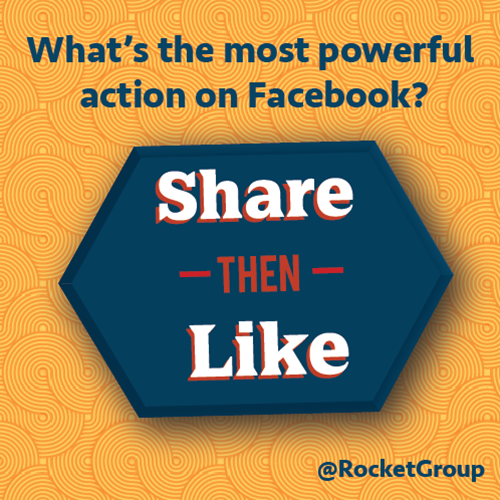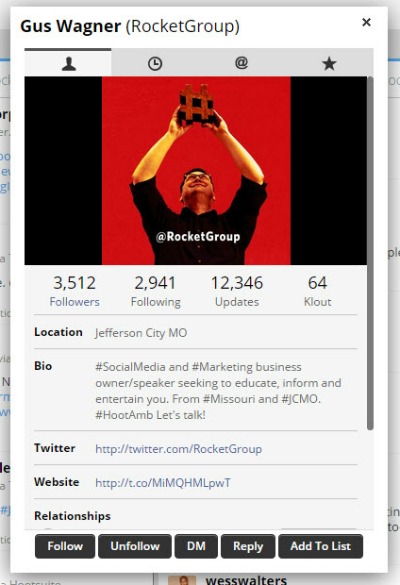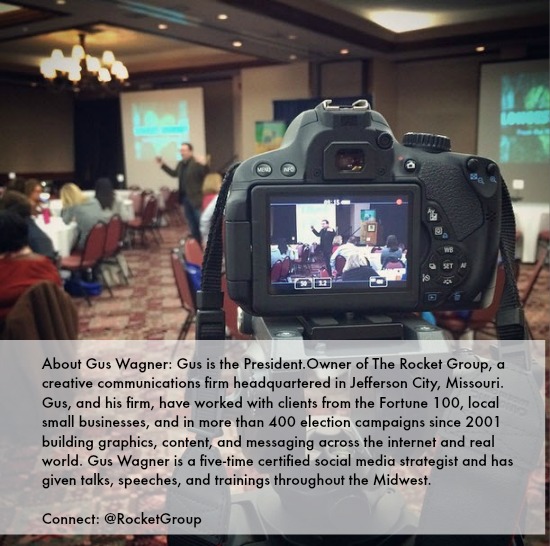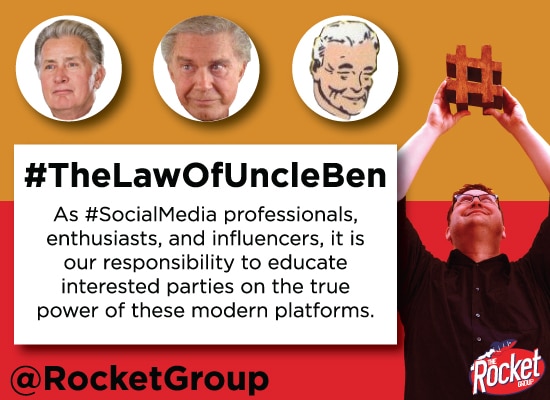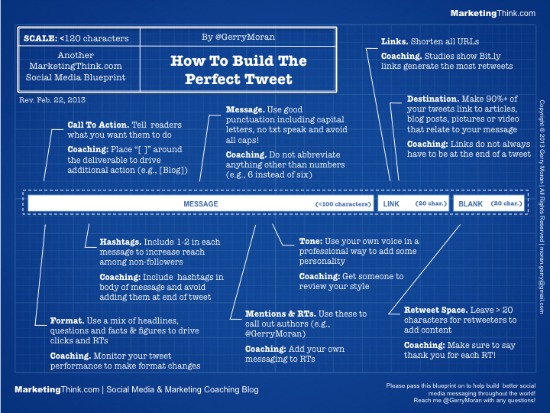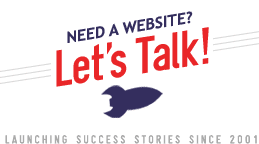Blog
How to Get More People to Interact with Your Content
Gus Wagner - Comment (0)There have been times when my content sucked, and my audience reach plummeted, so I can relate when someone asks me, “Why aren’t people interacting with my content?”
The struggle to keep audiences engaged is one we understand firsthand, but when you ask us why people aren’t interacting with your stuff, you might not like the answer. I hate to be so brutal about this, but the painful truth (that all of us have experienced) is basically that your content sucks.
If you not sure if you content sucks, check out this post we wrote, called “3 Reasons People Aren’t Interacting With Your Content.” If you’re sharing spammy links, if you’re always selling to your audiences, or if your content is ugly, then your content sucks, and your interaction probably isn’t what you want it to be.
So what can you do to make your content better?
Answer the question “What’s in it for me?”
The most important way you can improve your content marketing is by asking yourself the question “What’s in it for me?”
The catch is that the “me” in this case isn’t you; it’s your audience. You need to ask yourself what value or benefit your content offers them. What’s in it for your audience if they click on your link, look at your content, or otherwise engage with what you’re putting out there? Is your audience going to get value or benefit from what you’ve shared?
If you see your number shrink, chances are good that you’re not informing or educating or entertaining your audiences. Whether it’s your blog, your website, or your social media, you’ve got to ask yourself what’s “in it” for your audience.
Improve Your Facebook Content
If your content is on Facebook, you need to be aware that there’ve been a lot of algorithm changes lately that have caused dramatic decreases in the organic reach of posts. This post has some solid tips in it for beating Facebook at the algorithm game.
Where Facebook content is concerned, there’s a valuable tool that you probably aren’t paying attention to; Facebook Insights. It’s amazing to us how often, when we ask people if they’ve looked at their Insights, they say “What’s that?”
Your Facebook Insights are all the numbers above your cover image when you’re logged in as an admin on your Facebook page. Click those links: All the information you need about your audiences — and about what content they’ve engaged with — is right there.
Give Your Content a Facelift
When I wrote the 3 Reasons post, I mentioned that ugly content is one of the reasons people won’t interact with you online. If people are turned off by your graphics, photos, fonts, or color palates, they’re a lot less likely to interact with what you share.
Here are a few of the tools I’ve had good luck using to make our content look great:
PicMonkey is a photo-editing tool that I think of as an Instagram for my desktop. It’s easy to use, and it works great. The free version is great, or you can pay for an upgraded version that has extra bells and whistles.
Canva is great for creating graphics. You can include photos, call-outs, and other graphic elements into great-looking images for your website, blog, or social content. We use Canva almost every day.
Getty has provided beautiful content for generations, and it’s recently opened up a lot of its creative gallery to the public for free use. Go to Getty Images and look for the Embed Images section for free, powerful photographs you can embed into your website or blog.
You’ve got the same Internet that I do, and you can find these tools (and others) yourself. These tools and this advice on audience interaction aren’t trade secrets. If you need some help, give us a call or shoot us a message. Let’s talk!
Tools mentioned in this post:
Read more...Do You Have the Resources for Social Media Success?
Gus Wagner - Comment (0)It takes more than signing up for accounts and throwing money at ads to succeed at social media. Can you, and your company, organization, or non-profit, commit to telling the stories about your efforts?Read more...How To Make A Good First Impression on Facebook
Gus Wagner - Comment (0)Did your mom have you clean the house all the time in case “company dropped by” and she wanted to make a good impression? The Facebook page of your business, organization, or non-profit should be treated the same way even though very few are ever going to come by and see it.
99.9{628954cb2bad821921117287c23504a7919be1893c483613421612ad8712cddb} of people will never return to your Facebook page once they have Liked it.
Think about how you use Facebook: you (most likely) scroll through your newsfeed until something from a friend, family member, or brand page catches your eye and you stop. You then move further down the newsfeed or to another site if you clicked a link in whatever caught your eye.
You may have liked Coca-Cola, Chevrolet, or even The Rocket Group, on Facebook but unless you see compelling content from them in your newsfeed you most likely are not going to go to their page directly to see what is up.
The same is true of your fans. If they do not see you in the newsfeed, then they are not thinking, Liking, Sharing, or commenting about your company, organization, or non-profit.
This is why you have to post to Facebook. And post to Facebook. And post to Facebook.
Actually, this is why you should have a plan and strategy in place for what your business, organization, or non-profit is going to post to Facebook. Posting for the sake of posting will only get you so far. If your content is not relevant to your fans, is not connected to your general mission, or is just junk (think cat pictures when you have nothing to do with cats), you are not going to move anyone to interact with you on Facebook or to do business with you in the real world.
What you should be posting to Facebook
You will see and hear a continuing theme of “Educate, Inform, and Entertain” in our words, pictures, and videos here on this site and on our social media channels. Our goal with all of our content it to fit one of those three keywords. If our content isn’t teaching you something you did not know, informing you of an opportunity, or at the very least making you smile and think, we have let you down. We recommend you do the same with your content for your audience.
What else should you be doing to clean up your Facebook page?
- Go to the “About” section and answer as many of the questions as possible. This will help any newcomers to learn more about you…including your parking situation!
- Make sure your profile and cover images are readable, to size, and representative of your business. Need help with your sizes and ideas? Use a mostly-free tool like Canva to easily guide you through the process.
- You should also make plans at least once a week – at a minimum – to go on Facebook as your brand page. Scroll your pages newsfeed and Like, comment, and Share with the pages you are connected to as your brand. Don’t Like any pages as your brand? What the heck are you waiting for?
Doing these simple things will help you create a good, nay, great first impression to new company or that 1{628954cb2bad821921117287c23504a7919be1893c483613421612ad8712cddb} or so that may come by to check up on you. Also, all the moms will be proud of you!
Got any questions? Feel free to ask in the comments below or connect with us on our social media channels anytime!
Read more...How Not to Suck on Twitter
Gus Wagner - Comment (0)I have one simple trick to share with you today that will help keep you (or your business, organization, or non-profit) from sucking at Twitter. My trick isn’t complicated or time-consuming, and it doesn’t require a “social media expert” to execute.
My simple trick for how not to suck at Twitter? Complete your profile. TWEET THIS
When you create a new Twitter profile, Twitter uses a default avatar as your personal profile picture. That default picture is of an un-hatched egg. If you’re using the un-hatched Twitter egg as your profile picture, you’re sucking at Twitter.
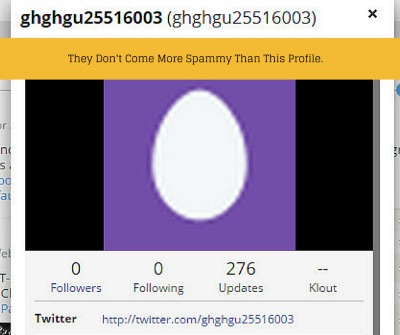
Here’s why:
The un-hatched egg tells everyone else on Twitter that you’re either a newbie or a spammer. If they think you’re a newbie, you won’t have much credibility with more established Twitter accounts. If they think you’re a spammer, you could have bigger problems.
If other users report your account as spam, you’ll face some difficulties down the road. Even if your account is completely legitimate, spam reports can hurt you down the line, and that un-hatched egg profile picture will earn you a lot less followers than you’d get with a personalized image.
It takes 5 seconds to upload a friendly, smiling picture of yourself to Twitter or to upload your corporate logo. Anything is better than the un-hatched egg, so don’t suck: upload a better profile picture.
Now that your smiling face or your logo or some other image that represents you (or your company) is on Twitter as your avatar, you need to finish filling out your profile. Let’s use my Twitter bio as an example:
My bio is filled out completely. My name, description, and location are all there. For bonus points, I’ve hashtagged the key words that might help people find me. Those hashtags are #SocialMedia, #Marketing, #Missouri, #JCMO, and #HootAmb.
My geographic location makes me searchable when other people look for influencers in Jefferson City, Missouri. My web address helps people learn more about what we do at The Rocket Group, and then, of course, you can see how long I’ve been on Twitter (I joined in May 2009).
We HQ in the heart of #Missouri which is in the heart of #America: #JCMO Where are you from? pic.twitter.com/CA9iXytrFb
— Gus Wagner (@RocketGroup) January 15, 2015
It only took a few minutes for me to create my entire Twitter bio, including uploading my profile picture, and I didn’t need to be an expert to do it. Twitter doesn’t have to be hard — filling out your profile is an easy way to not suck at it.
To learn more about how to rock at Twitter, check out these posts:
How to Properly Format Your Tweets
Why Did I Favorite Your Tweet?
Do you have thoughts on how else not to suck on Twitter? Leave a comment!
Read more...3 Reasons People Aren’t Interacting With Your Content
Gus Wagner - Comment (0)Online content can take a lot of forms, from words to photos to videos. And content can live in a lot of different places: Facebook, Twitter, YouTube, Instagram, blogs, websites, etc. Regardless of the kind of content you create or where you post it, if engagement is low, you’re probably doing something wrong.
One of the questions that comes up over and over again in emails, comments, and messages to us is, “Why aren’t people interacting with my content?”
To answer that question, let’s look at three reasons people aren’t interacting with your content:
1. Your Content is All About Links
We see this on Facebook all the time: businesses, organizations, or nonprofits drop links into their Facebook feeds using Facebook’s auto-link feature. That feature is being downgraded in the Facebook algorithm, so you don’t want to keep “just posting links” there.
You also want to avoid spamming your audiences with links that aren’t relevant to your business. Putting a bunch of silly Buzzfeed-type nonsense out there bring you less success in the new Facebook algorithm than it did in the past. And it probably wasn’t bringing much return for you then.
Bottom line: If you’re posting a lot of lists, quizzes, and other spammy, link-driven contents on social media, you’re ensuring that people will ignore your content.
2. You Sell All the Time
Who likes following a business, organization, or non-profit who sells 24/7? Businesses, nonprofits, and organizations that are always selling on social media are forgetting one of the most important questions in content marketing: What’s in it for the customer/reader?
It’s easy to use social media to push sales all the time, but if you do, your engagement will most likely fall. Try using the 80/10/10 rule: 80{628954cb2bad821921117287c23504a7919be1893c483613421612ad8712cddb} of your content is educational, 10{628954cb2bad821921117287c23504a7919be1893c483613421612ad8712cddb} is informational, and 10{628954cb2bad821921117287c23504a7919be1893c483613421612ad8712cddb} is sales.
3. Your Content is Ugly
Whether it’s bad photos, bad graphics, or hard-to-read fonts, ugly content doesn’t get interaction. Even if you’ve got huge news to share, a killer offer to advertize, or something else of value — if your content looks ugly, people aren’t going to pay attention to it.
We wrote about three great online tools you can use to make your content more attractive in this post.
We all suffer from content suck sometimes. We’ve gone through times right here at The Rocket Group where our content was bad, and we lost followers. If your business, organization, or nonprofit is over-doing it on links, focusing too much on sales, or using ugly imagery, the good news is that it’s not too late to bounce back.
Sharing quality (not spammy) content, following the 80/10/10 rule, and making your content a little more attractive can help you drive increased content interaction. If you need a little more help, give us a shout! We’re always glad to help.
Tools We Use and Recommend:
Read more...The Month of Uncle Ben: Free Social Media Help
Gus Wagner - Comment (0)Thank you for a very successful first Uncle Ben project! We had a great time talking with dozens of businesses, organizations, and nonprofts from across the Midwest. Stay tuned to this spot for announcements on the next steps.As I explain in the video above our creation, The Law of Uncle Ben, it is the responsibility of those of us with the experience, education, and success stories in modern communications – especially social media – to help those individuals, businesses, organizations, non-profits, who do not have the same experience, education, and success stories to succeed in modern communications.
To that goal, we announce The Month of Uncle Ben where I, personally, will offer thirty-one communications audits to those who sign up for the program throughout the month of January, 2015. The audit can cover your social media, your website, your email newsletter, your audiences, and your goals. These half-hour conversations will be conducted over the phone or Google hangout and be recorded for your later use and reference.
Did I mention they will be free?
Yep, a free thirty-minute communications audit with myself to help get you on the right path to launching your own success story in 2015.
We’re going to learn from you what is working and not working with your communications and offer constructive criticisms, powerful suggestions, and recommendations of tools – free and low cost – which will make your life easier and your success story easier to attain. We will use our experience to help you, there will not be any upsell of our products and services, and there will be no charge for these audits.
Let’s put the Law of Uncle Ben to work for you and your social media communications in 2015! Claim your thirty minute appointment with the link below.
 PS
PS
Be sure to connect with us on Twitter, Facebook, and on our News page to get dozens of helpful updates about social media, marketing, and communications (and some fun stuff too!) which we post every week. Also, check out our daily “Proof of Life” #UncleBen-related posts which we rotate between Instagram and Facebook!
Read more...Schedule your Facebook Posts on the New Schedule System
Gus Wagner - Comment (0)Facebook recently updated its scheduling tool and this has caused some calamity among many users. The video below walks you through a screen cast of creating a scheduled post in the new system.Why should you schedule your posts? There are two main reasons:1. Scheduling days, weeks, or months (not recommended) of posts allows you to manage a part of your content plan in one sitting instead of taking time to make posts every day.2. Using the schedule tool gives you a “last chance” to review your posts for spelling and link errors before you make the post live. If you begin thinking of it as an edit tool more than a time management tool, you will become more comfortable with it and use it to save time as well. You can also perform this same review function with your tweets through the Hootsuite tool.Thanks for watching the video and reading the words above. If you have any questions feel free to contact us at any time. Be sure to connect with us on Facebook, Twitter and on our News page for the dozens of helpful pieces of marketing, social media and fun information we are sharing every week!You may also be interested in:Read more...How to be a Great(er) Public Speaker
Gus Wagner - Comment (0)One of more frequent projects we undertake here at The Rocket Group is public speaking and training sessions. Whether these are in public venues or private sessions, we have worked with audiences across the Midwest to educate, inform, and entertain audiences about advocacy, public policy, marketing, and, of course, social media.
Speaking (pun intended) personally, this video is from one of my own favorite recent presentations when a local Rotary Club here in Jefferson City, Missouri asked me to give a speech on any topic I wanted. I chose to talk about some best practices and tips when it comes to public speaking.
If you would be interested in having me in to talk with your group or business or at your event, feel free to contact me anytime.
Enjoy…and let me know what you thought in the comments below!
Read more...How to Properly Format Your Tweets
Gus Wagner - Comment (0)How to Properly Format Your Tweets http://t.co/uAhjHpTl8M There is no right way but this will help you. pic.twitter.com/YObXCmaftx
— Gus Wagner (@RocketGroup) December 4, 2014
During the recent Social Media Day event in Jefferson City, Missouri, I took the challenge of highlighting best practices on Twitter in just a few minutes. This portion of the presentation discusses proper formatting of tweets to have the most success in reaching audiences and getting clicks.nnSlides from the presentation include: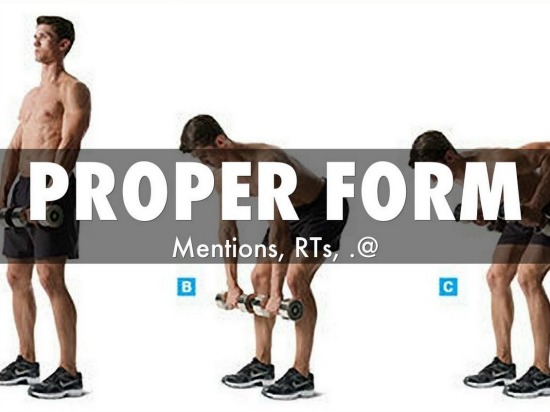

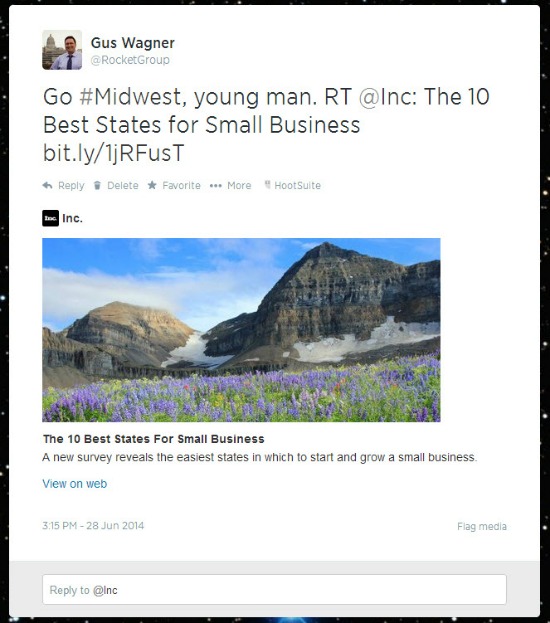 Read more...
Read more...Why You Should Choose Hootsuite Pro
Gus Wagner - Comment (0)At a recent presentation on social media best practices with ACT Missouri, I discussed a frequently asked question regarding Hootsuite as a management tool for social conversations. The video of that conversation is embedded below.
First, a couple of points:
- Full disclosure: As disclosed in my Twitter bio, I am a Hootsuite Ambassador (#HootAmb) but receive no monetary compensation for my endorsement of the program. As mentioned right off the bat in the video, I occasionally do get some goodies.
- I would be overwhelmed by the noise of social media without Hootsuite there to guide the communications and listening for our clients channels and our own. It’s an incredibly powerful and affordable tool.
- Finally, this speech was given during the 2014 National League Championship Series featuring the St. Louis Cardinals. I was highly optimistic at this time. Maybe next year!
Check the programs out for yourself:
Hootsuite Hootsuite PRO A Comparison of the Two, well, Three Plans
Thanks to ACT for having me to work with your staff and for the good work you are doing. If you are interested in training sessions of your own – in real life, in a class or online – feel free to contact me anytime!
On to the video!
Thanks for the time,Read more...

